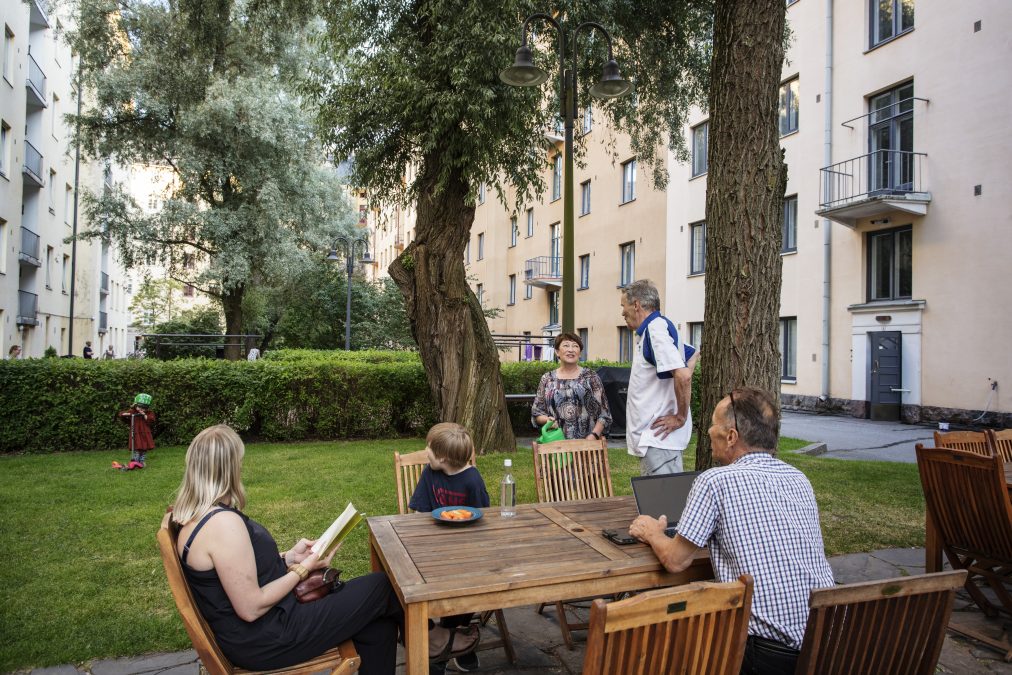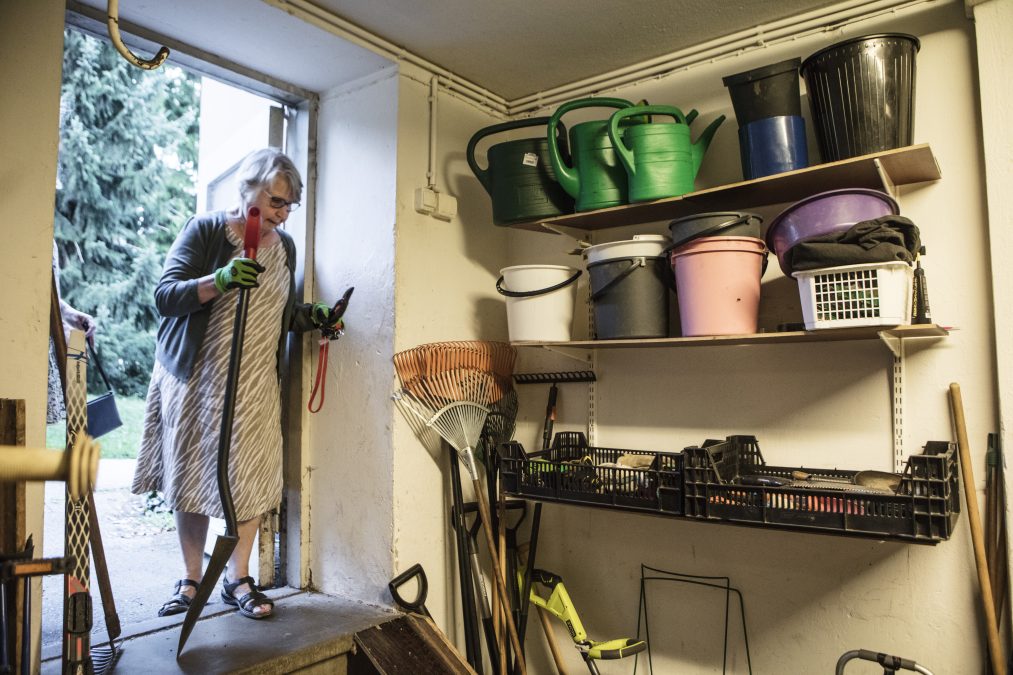Phase 1: The change in the courtyard begins with the residents – summon the courtyard team!
Are you unhappy with the courtyard of your apartment building? There are probably others who feel the same way. Now is the time to start a conversation about the yard and find neighbours of similar minds.

OBJECTIVE: Bring neighbours from my building to a yard meeting, minor improvements to the yard.
MOTIVATION: Easy, resident-oriented, does not require financial commitment.
Whether you are a resident, a shareholder, a tenant or a member of the board of the housing company, you are the right person to invite neighbours to a discussion on the courtyard of your apartment building. When one person opens a discussion, it is easy for others to join in. This does not require much effort or commitment . Once the discussion gets started, others interested in the courtyard project will also emerge.
Learn more about the block courtyard establishing roadmap
Path to a block courtyard:
Draft an invitation to a courtyard meeting
You can write the invitation to the first courtyard meeting in your own words or use an invitation template.
Make sure that as many people as possible see the invitation, i.e. post it on notice boards, deliver it to post boxes, share it in the building’s social media group and by e-mail to residents, shareholders and the board of the housing company.
Explain in advance that the purpose of the informal meeting is to hear opinions on the courtyard from residents in your apartment building: what kind of thoughts do they have about the current state of the courtyard, and what kind of improvements do they want for the courtyard? Some residents do not have time to attend the meeting, and others prefer to express their opinions anonymously. It is a good idea to get a post box in the stairwell and an e-mail address for their use.
Arrange a courtyard meeting
The meeting should begin with a presentation round. Agree on who will lead the discussion in advance. They will make sure that everyone gets to have their say. It is not important to outline the final result at this time, but to review the current situation and any wishes people may have for their courtyard. If there are lots of people, divide the people into smaller groups and make notes of the opinions expressed. It is also important to listen to and write down the views of children and young people. At the end of the meeting, residents interested in the courtyard will set up a courtyard group.

Publish results
Members of the courtyard group should go through the residents’ wishes carefully. What were people most often satisfied with, what did they want to change and did they have any concerns? Now is high time to discuss the project with the board of the housing company or the owner of the property: how would we promote this together? Inform residents, business premises users and shareholders of the results. A great deal of communication is needed in each stage: transparency is in everyone’s best interest.
More people are likely to be interested in the courtyard group now. Create a joint message group and arrange meetings at least twice a year, preferably on a monthly basis in the initial phase.
Courtyard group takes action
Some of the wishes may be easy to implement immediately: maybe residents would like some summer flowers, cultivation boxes or seating areas in the courtyard. Ideas like this can usually be funded either by the board of the housing company or by the tenant committee of the rental company. The courtyard group will agree on the establishment and rules of cultivation. At the initial stage, it is good if all residents of the building are welcome to tend to, water and harvest the crops.
Some of the wishes may require further investigation and additional funding. Share responsibility with those who want to participate. Major decisions should be made in the general meeting and by the rental company.
While people’s wishes are being realised in their own housing company, it is useful to establish and strengthen connections with neighbouring buildings.
